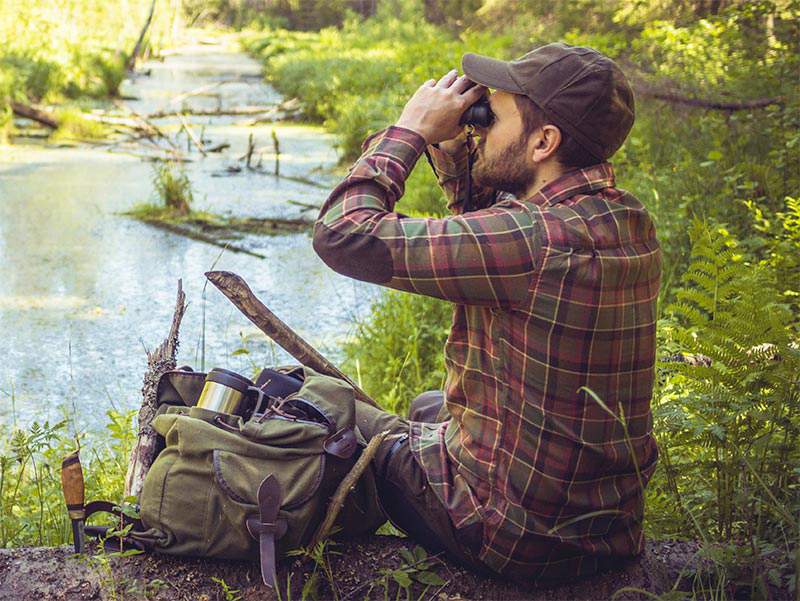Choosing and Using Birding Binoculars
One of the most useful pieces of equipment for watching birds is a pair of binoculars. Unfortunately, a poor pair can make viewing more difficult rather than easier, so you want to make sure that you get as good a pair as possible within your budget. What should you look for?
First, all binoculars are marked with two numbers, such as 7×35, 8×32, or 10×40. The first number tells you the pair’s magnification power—how many times closer the binoculars make the image appear. You’d think the bigger the number, the better, but that’s not at all true. The bigger the magnification, the bigger the bird will appear, but the dimmer the image will appear for the same size binoculars. Also, the bigger the magnification, the less background will be visible, making it harder to get the binoculars on the bird you’re looking for. If your hands shake at all, (like when it’s below zero and you’re shivering), or if there is heat shimmer over a field or pond, that will appear more magnified, too.

The second number is the diameter, in millimeters, of the large piece of glass (the objective lens) on the binoculars. The bigger that number, the brighter your image, but the heavier the binoculars. Tiny “pocket binoculars” are seldom worthwhile. The smallness seems to be a convenience, but the view through them is often too small and dim to be helpful.
To find the right balance, a good rule with inexpensive or mid-priced binoculars is to make sure the second number is 5 times the first number. So optimal choices would be 7×35 8×40, or 10×50. If you use binoculars frequently, you’ll be quick at getting even 10x binoculars “on the bird,” but if you don’t use them a lot, you will probably be happier with 7x or 8x glasses, which give you a wider field of view—helpful for finding the bird.
How much should you spend? The best rule is to get the nicest pair of binoculars that you can comfortably afford to replace. There’s a huge jump in quality between $50 glasses and $350 glasses. The jump in quality between $350 binoculars and $1,500 or $2,000 binoculars is noticeable, but not nearly as huge a jump.

If you wear eyeglasses, push the eyecups on the binoculars all the way in so your glasses are close to the ocular lens. If you don’t wear eyeglasses, pull the eyecups out so they shade any side light out.
Make sure the binoculars are comfortable in your hand and that you can see well through them in the store. A knowledgeable salesperson can help you adjust the barrels to accommodate slight vision differences between your eyes.
If you’re buying binoculars for a child, make sure the barrels come close enough together to accommodate the relatively small distance between a child’s eyes.

You can keep off the protective caps that cover the large, objective lenses whenever you’re out with your binoculars. A rain guard—a guard that covers both ocular lenses at the same time—is easier to use than separate lens caps on the eyecups. Unless it’s raining, you won’t need either on the binoculars while you’re birding except when you are eating or drinking—then you may want to protect them by covering the eyecups.
Practice using binoculars on stationary objects so you’re quick at getting them on different-sized things. Keep your eyes on the object—don’t look at your binoculars as you pull them up. This will make it easier when you’re trying to see a tiny, distant bird.

